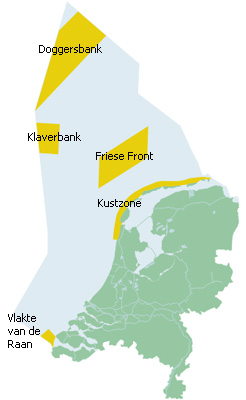Cleaver Bank on:
[Wikipedia]
[Google]
[Amazon]
 The Cleaver Bank (
The Cleaver Bank (
 The Cleaver Bank (
The Cleaver Bank (Dutch
Dutch commonly refers to:
* Something of, from, or related to the Netherlands
* Dutch people ()
* Dutch language ()
Dutch may also refer to:
Places
* Dutch, West Virginia, a community in the United States
* Pennsylvania Dutch Country
People E ...
: ''Klaverbank)'' is a sandbank in the North Sea
The North Sea lies between Great Britain, Norway, Denmark, Germany, the Netherlands and Belgium. An epeiric sea on the European continental shelf, it connects to the Atlantic Ocean through the English Channel in the south and the Norwegian S ...
about off the west coast of the Netherlands
)
, anthem = ( en, "William of Nassau")
, image_map =
, map_caption =
, subdivision_type = Sovereign state
, subdivision_name = Kingdom of the Netherlands
, established_title = Before independence
, established_date = Spanish Netherl ...
and south of the Dogger Bank
Dogger Bank (Dutch: ''Doggersbank'', German: ''Doggerbank'', Danish: ''Doggerbanke'') is a large sandbank in a shallow area of the North Sea about off the east coast of England.
During the last ice age the bank was part of a large landmass c ...
. The size of the bank is about 1235 km2. The bank is 30-40 metres below sea level.
The Cleaver Bank is an open-sea reef in the terms of the European Habitats directive
The Habitats Directive (more formally known as Council Directive 92/43/EEC on the Conservation of natural habitats and of wild fauna and flora) is a directive adopted by the European Community in 1992 as a response to the Berne Convention. The E ...
and has been registered with the European Union as a Natura 2000
Natura 2000 is a network of nature protection areas in the territory of the European Union. It is made up of Special Areas of Conservation and Special Protection Areas designated under the Habitats Directive and the Birds Directive, respectively ...
site. The bank originated as a terminal moraine
A terminal moraine, also called end moraine, is a type of moraine that forms at the terminal (edge) of a glacier, marking its maximum advance. At this point, debris that has accumulated by plucking and abrasion, has been pushed by the front edge ...
of a glacier during one of the Ice Ages.
The surface of the bank partly consists of gravel and larger cobbles. Due to the relatively great depth of the Cleaver Bank, the soil is only seldom, in very heavy weather, moved by wave action. Because the gravel is relatively poor in silt and the transparency is great, there is enough light to allow for the growth of calcareous red algae
Red algae, or Rhodophyta (, ; ), are one of the oldest groups of eukaryotic algae. The Rhodophyta also comprises one of the largest phyla of algae, containing over 7,000 currently recognized species with taxonomic revisions ongoing. The majority ...
. The benthic fauna on the bank contains species that live on a hard substrate, such as sea anemones
Sea anemones are a group of predatory marine invertebrates of the order Actiniaria. Because of their colourful appearance, they are named after the ''Anemone'', a terrestrial flowering plant. Sea anemones are classified in the phylum Cnidaria, ...
and polyps
A polyp in zoology is one of two forms found in the phylum Cnidaria, the other being the medusa. Polyps are roughly cylindrical in shape and elongated at the axis of the vase-shaped body. In solitary polyps, the aboral (opposite to oral) end i ...
. Rare species living on Cleaver Bank are Thracia convexa and the Rayed artemis. The bank is used by herring
Herring are forage fish, mostly belonging to the family of Clupeidae.
Herring often move in large schools around fishing banks and near the coast, found particularly in shallow, temperate waters of the North Pacific and North Atlantic Oceans, i ...
for spawning. In addition, the soft coral type dead man's finger is found here.
A 60-metre-deep channel, called the Botney Cut, runs through the Cleaver Bank. Animals like harbour porpoises, minke whales
The minke whale (), or lesser rorqual, is a species complex of baleen whale. The two species of minke whale are the common (or northern) minke whale and the Antarctic (or southern) minke whale. The minke whale was first described by the Danish na ...
, and white-beaked dolphin
The white-beaked dolphin (''Lagenorhynchus albirostris'') is a marine mammal belonging to the family Delphinidae (oceanic dolphins) in the suborder Odontoceti (toothed whales).
Taxonomy
The species was first described by the British taxonomist ...
live there, mainly in the summer.
Conservation
In 2001, the Dutch government considered the Cleaver Bank as a potential area for mining gravel. After making anEnvironmental impact assessment
Environmental Impact assessment (EIA) is the assessment of the environmental consequences of a plan, policy, program, or actual projects prior to the decision to move forward with the proposed action. In this context, the term "environmental imp ...
the plan was abandoned. The Cleaver bank is in 2015 considered for protection as a Marine protected area
Marine protected areas (MPA) are protected areas of seas, oceans, estuaries or in the US, the Great Lakes. These marine areas can come in many forms ranging from wildlife refuges to research facilities. MPAs restrict human activity for a conserv ...
. The Greenpeace organisation considered the actions of the Dutch government in this direction too slow and sunk some large boulders on the seabed in May 2015 to increase the nature value. Dutch fishers lifted the boulders on 16 June 2015, because they were afraid the boulders would damage their fishing gear.
References
{{Reflist Sandbanks of the North Sea Shoals of the Netherlands